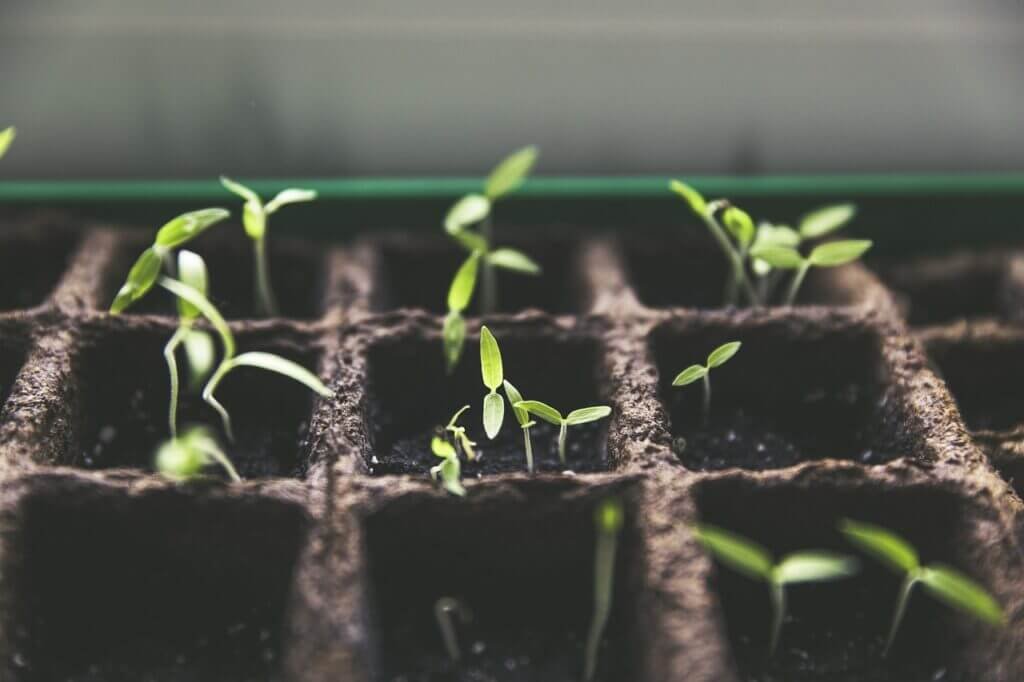You’ve always wanted to have a green thumb and bring the beauty of nature into your urban dwelling, but you’re not quite sure where to start. That’s where container gardening comes in. This innovative gardening technique allows you to create a thriving garden in limited spaces, such as balconies, rooftops, and even windowsills. Container gardening not only adds a touch of greenery and serenity to your urban environment but also allows you to grow your favorite herbs, vegetables, and flowers. With a few simple steps and some basic materials, you’ll be well on your way to becoming a successful urban gardener in no time.

Choosing the Right Containers
Container gardening is a popular and practical way to cultivate plants in urban settings where space may be limited. Choosing the right containers is the first step in creating a successful container garden. Consider the material options available, such as plastic, ceramic, or fiberglass. Each material has its own advantages and disadvantages. Plastic containers are lightweight and affordable, but they may not be as visually appealing as ceramic or fiberglass options. Ceramic containers are durable and aesthetically pleasing, but they can be heavy and prone to cracking. Fiberglass containers provide the best of both worlds, with durability and lightweight properties. Select a material that suits your preferences and needs.
Size and depth considerations are crucial when choosing containers for your urban garden. The plants you intend to grow will determine the size and depth requirements. Smaller plants, like herbs or flowers, can thrive in shallow containers, while larger plants, such as vegetables or fruit-bearing trees, may require deeper containers to accommodate their root systems. Ensure that the containers you choose have enough space for your plants to grow and develop properly. Remember, larger containers tend to retain moisture better and require less frequent watering.
Drainage needs are another important factor to consider when selecting containers for your urban garden. Proper drainage is essential to prevent waterlogged soil, which can lead to root rot and plant death. Look for containers with drainage holes at the bottom. If your chosen container does not come with drainage holes, you can easily drill or punch holes yourself. Additionally, consider using a layer of coarse rock or gravel at the bottom of the container to improve drainage. This will help excess water flow freely away from the plant’s roots.
Selecting the Perfect Location
Finding the perfect location for your urban container garden is crucial for the success of your plants. The amount of sunlight your chosen location receives will determine which plants will thrive there. Most plants require at least six hours of direct sunlight per day, while others, such as shade-loving plants, can tolerate less sunlight. Observe your chosen location throughout the day to determine its sun exposure. Take note of any shady spots or areas where the sunlight is blocked by nearby buildings or trees.
Microclimates in urban areas can significantly affect plant growth. Urban environments often consist of different microclimates due to variations in sunlight, wind, and temperature. Consider how these microclimates may impact your plants. For example, areas near concrete or tall buildings may retain more heat, while windy balconies or rooftops may experience harsher conditions. Choose plants that are suitable for the microclimate of your chosen location. Consider using windbreaks, such as trellises or tall plants, to protect your garden from strong winds.
Deciding between balcony and rooftop gardening is another consideration when selecting the perfect location for your container garden. Balcony gardens are popular options for apartment dwellers, as they provide a convenient and accessible space for gardening. However, balconies may have limited sunlight or space. On the other hand, rooftop gardens offer more space and often receive ample sunlight, but they may require additional structural support and careful planning to address weight limitations. Assess the available space, sunlight exposure, and structural considerations to determine whether a balcony or rooftop garden is more suitable for your needs.

Picking the Ideal Plants
Selecting the right plants is crucial for a successful container garden in an urban setting. Consider the suitable plant types for your chosen location. Some urban container gardens focus on growing ornamental plants, such as flowers or ferns, to create a visually pleasing environment. Others may prioritize growing edible plants, such as herbs, vegetables, or fruit-bearing trees, to enhance sustainability and provide fresh produce.
Container-friendly varieties are preferred in urban container gardening because they are adapted to thrive in limited spaces. Look for compact or dwarf varieties of your desired plants, as they require less room to grow. For example, instead of a traditional tomato plant, choose a patio or cherry tomato variety that is specifically bred for containers. Additionally, consider the growth habits of your chosen plants. Vertical-growing plants, such as vine-like vegetables or climbing flowers, can make efficient use of space by growing upward with the help of trellises or support structures.
Consideration of plant size and height is essential for maintaining a harmonious and visually appealing container garden. Grow plants with similar size and height requirements together to ensure that they complement each other and do not overshadow or crowd one another. Tall plants can be positioned at the back or center of containers, while shorter plants should be placed towards the front or edges. This arrangement ensures that all plants receive adequate sunlight and allows for better air circulation, reducing the risk of disease and pest infestations.
Preparing the Containers
Properly preparing the containers before planting is essential for the health and growth of your plants. Cleaning and disinfecting the containers is an important step to eliminate any potential pests or diseases. Wash the containers with mild soap and water, ensuring that all the dirt and residue are removed. Rinse thoroughly and disinfect the containers by soaking them in a solution of one-part bleach to nine-parts water. This will help kill any lingering pathogens. Make sure to rinse the containers again after disinfecting to remove any remaining bleach.
Adding drainage holes to the containers is crucial for preventing water stagnation. If your containers do not have drainage holes, use a drill or a hammer and nails to create several holes at the bottom. Aim for at least one hole per square foot of container surface area. These drainage holes allow excess water to escape, preventing the roots from sitting in water and potentially rotting. Additionally, placing a layer of coarse rock or gravel at the bottom of the container can further aid drainage.
Choosing the right soil mix is essential for providing your plants with the necessary nutrients, moisture retention, and aeration. Opt for a high-quality potting mix specifically formulated for container gardening. These mixes often consist of a blend of organic matter, such as compost or peat moss, along with sand or perlite for improved drainage. Avoid using garden soil, as it tends to become compacted and may contain weed seeds or pathogens. Fill the containers with the soil mix, leaving enough space for the plants’ root balls.

Watering and Irrigation
Proper watering and irrigation techniques are crucial for maintaining healthy and thriving container gardens. Setting up adequate drainage is the first step in ensuring proper water management. As mentioned previously, ensure that your containers have drainage holes to prevent waterlogging. Additionally, elevating the containers on pot feet or bricks can further aid in drainage by allowing excess water to flow freely.
Monitoring moisture levels is key to preventing both under and over-watering. Stick your finger into the soil up to your knuckle. If the soil feels dry at that depth, it’s time to water. If the soil is still moist, you can wait a little longer. Be cautious not to let the soil completely dry out, as this can cause stress to the plants. However, be mindful not to over-water, as excessive moisture can lead to root rot and other diseases. Each plant may have specific moisture requirements, so pay attention to the needs of your individual plants.
Choosing the right watering techniques can help avoid water wastage and ensure that the plants receive adequate hydration. Avoid overhead watering, as it can lead to water loss through evaporation and increase the risk of foliar diseases. Instead, use a watering can or a drip irrigation system to deliver water directly to the base of the plants. This method allows water to penetrate the soil and reach the roots effectively. Water deeply and thoroughly, ensuring that excess water flows out of the drainage holes.
Fertilizing and Nutrient Management
Proper nutrient management is essential for the healthy growth and development of plants in your container garden. Understanding plant nutrient needs is crucial to provide the necessary elements for their overall health. Plants typically require three primary macronutrients: nitrogen (N), phosphorus (P), and potassium (K). Nitrogen promotes leaf growth, phosphorus supports root development and flowering, while potassium aids in overall plant health and disease resistance. However, each plant has specific nutrient requirements, so it’s essential to research and provide the appropriate nutrients in the correct ratios.
Choosing the right fertilizers for your container garden is crucial to meet the nutrient needs of your plants. Organic fertilizers, such as compost, manure, or worm castings, are popular options for urban container gardens. They provide a slow-release source of nutrients and improve the soil’s overall structure. Alternatively, synthetic fertilizers are readily available and provide a quick nutrient fix. However, they should be used sparingly and following the manufacturer’s instructions, as over-fertilization can lead to nutrient imbalances and damage the plants.
Avoiding over-fertilization is just as important as providing the necessary nutrients. Excessive amounts of fertilizer can cause nutrient burn, resulting in yellowing leaves, stunted growth, or even plant death. Always follow the recommended dosage and frequency for fertilizers. If you notice signs of nutrient burn, such as leaf discoloration or wilting, flush the soil with water to leach out excess nutrients. Regularly monitoring your plants’ overall health and growth can help you adjust your fertilization practices accordingly.
Dealing with Pests and Diseases
Managing pests and diseases is an ongoing task when it comes to container gardening in urban areas. Identifying common urban pests is essential for implementing effective pest control methods. Pests such as aphids, whiteflies, or spider mites can infest container gardens and cause damage to the plants. Regularly inspect your plants for any signs of pests, such as bite marks or discoloration. Early detection allows for timely intervention and minimizes the damage inflicted by pests.
Using natural pest control methods is preferable for an urban container garden to minimize chemical exposure. For example, introducing beneficial insects like ladybugs or lacewings can help control aphid populations. Additionally, companion planting with pest-repellent plants, such as marigolds or lavender, can deter pests. Neem oil, a natural pesticide derived from the neem tree, can also be effective against many common garden pests. Regularly monitor your plants and implement these natural pest control methods when necessary.
Recognizing and treating plant diseases is crucial for preventing the spread and potential devastation of your container garden. Common plant diseases, such as powdery mildew or fungal infections, can quickly spread in urban areas where plants are closely spaced. Keep an eye out for any signs of diseases, such as spots, wilting, or mold-like growth on the plants’ foliage. Promptly remove and dispose of affected plant material to prevent further contamination. If necessary, apply organic fungicides or disease-specific treatments following the manufacturer’s instructions.
Maintaining Container Gardens
Regular maintenance is necessary to keep your container garden healthy and visually appealing. Regular pruning and deadheading, the removal of spent flowers, are essential tasks to promote plant growth and prolong flowering periods. Pruning helps maintain the shape and size of plants. Remove any dead, damaged, or diseased branches or leaves to prevent the spread of pests or diseases. Deadheading also encourages more blooms and redirects the plant’s energy towards new growth.
Supporting plants with trellises or stakes is necessary for taller plants or those with vining habits. As these plants grow, they may become top-heavy or require additional support to prevent them from falling or bending. Install trellises or stakes at the time of planting or as soon as the plants start to grow taller. Secure the plants gently to the support structures, ensuring that they have enough room to grow without being constricted.
Keeping containers clean and tidy is not just for aesthetic purposes; it also promotes plant health. Regularly remove any fallen leaves, debris, or weeds from the containers’ surface. This reduces the risk of pests or diseases finding shelter or breeding grounds. Additionally, wipe down the containers occasionally to remove any dirt or residue that may accumulate. Clean containers not only improve the overall appearance of your garden but also minimize potential health risks to your plants.
Overcoming Space Limitations
Urban container gardening often requires creative solutions to overcome space limitations. Implementing vertical gardening techniques is an effective way to maximize space utilization. Vertical gardens allow plants to grow upward on structures like trellises, walls, or hanging panels. By growing plants vertically, you can take advantage of unused vertical space while adding a visually striking element to your urban garden.
Utilizing hanging baskets is another space-saving solution for urban container gardens. Hanging baskets can be suspended from balconies, railings, or overhead structures, allowing you to grow plants without using valuable floor space. Choose lightweight and durable hanging baskets that have sufficient drainage holes and enough space for the plants’ root systems. Consider cascading or trailing plants like ivy or petunias for added visual interest.
Creating a tiered garden is yet another way to overcome space limitations in an urban container garden. Tiered gardens involve stacking containers at different heights to create vertical layers. This technique allows you to grow a variety of plants in a confined space while maintaining visual appeal. Use sturdy and stable tiered shelving or plant stands to support the containers. Arrange the plants strategically, with taller plants at the back or center and shorter plants towards the edges, to ensure adequate light and airflow.
Troubleshooting Common Issues
While container gardening can be rewarding, it also comes with its fair share of challenges. Understanding and troubleshooting common issues can help ensure the success of your urban container garden. Wilting or yellowing leaves are often signs of either under or over-watering. Adjust your watering practices accordingly and monitor the soil moisture levels to prevent further damage. Additionally, check for pests or nutrient deficiencies, as these can also cause leaf discoloration.
Poor plant growth can result from various factors, including inadequate sunlight, insufficient nutrients, or root-bound plants. Assess the sunlight conditions of your chosen location and consider relocating your plants if necessary. Provide the appropriate nutrients based on your plants’ needs, and check for signs of root-bound plants. If the roots have outgrown the container, it may be time to repot them into a larger container. This will allow the roots to expand and the plants to continue growing healthily.
Fungal infections can occur in container gardens due to high humidity or poor air circulation. Powdery mildew, for example, often affects plants grown in crowded or humid environments. Ensure adequate spacing between plants and promote airflow by occasionally rearranging their positions. Remove any infected plant material promptly, as fungal infections can quickly spread to neighboring plants. Applying organic fungicides or disease-specific treatments can help control the spread of fungal infections. Regularly monitor your plants and take prompt action at the first sign of infection.
By carefully choosing the right containers, selecting the ideal location, picking suitable plants, and following proper preparation, watering, fertilizing, pest management, and maintenance techniques, you can create a thriving and visually appealing container garden in an urban setting. Overcoming space limitations through vertical gardening and tiered designs allows you to make the most of limited space. By troubleshooting common issues, you can address problems promptly and ensure the long-term health and success of your urban container garden. Happy gardening!


